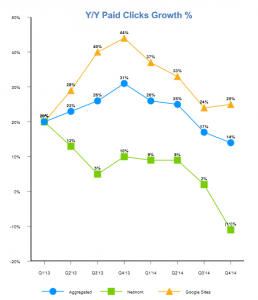Receiving critical feedback, especially in a performance review, is rarely easy. While a negative feedback can blindside us and incite feelings of self-doubt, it is also a valuable reality check and opportunity for growth. What’s important is how you hold on a positive attitude to work through the responses, move forward to restore your confidence and make any necessary changes.
Here’s how you can head into the right direction if you receive an unsatisfactory 360-degree review:
1. Steer Clear of Witch-Hunt
Typically 360-degree are based on anonymity, which allows raters (the ones providing feedback) to give more than neutral or vaguely favourable comments as they don’t have to fear negative repercussions. However, even with anonymous feedback, it is sometimes easy to read into the clues and tell who said what from the remarks.
Setting off on a witch-hunt is likely to betray the trust of the individuals that provided honest feedback with the understanding that they will not be summoned for the comments they make. It is, therefore, important to fight the urge to decrypt and hold yourself back from reaching out to your reviewers to address the insights.
2. Separate Emotions from Facts
Negative feedback can be demoralising. In the worst-case scenario, it’s a damning indictment of your terrible qualities. A bad performance review tends to stir up a gamut of negative sentiments in us, such as anger, sadness and rage. And it’s easy to be swept away in emotions and blow feedback out of proportion, making it something it is not.
Many of us pressure ourselves to push past our emotions and react right away, but I recommend that you take your time to wrap your head around the review so you can respond to it the right way. Try to break down the 360-degree feedback into its core components, so you can later decide which course you should be pursuing. You can also talk with your manager, a colleague or other raters to gain an additional perspective from the ones you trust.
3. Analyse Your Performance
Once you have acknowledged the feedback, it is time to analyse your performance and see where you went wrong. What we must remember is, all of us like to think we perform fairly well and it is true to a certain extent. Conventional wisdom, however, shows that we view ourselves from rose-tinted glasses.
In retrospect, you’ll come across instances where you thought you fulfilled your responsibilities effectively, but in actual fact you fell short of the standards others were holding you to.
Make sure you don’t view the negative 360-degree feedback through a non-confrontational lens since you run the risk of being blind to your shortcomings. Look for useful nuggets of information. Figure out the problems that persist as well as flaws that impede you from aligning with your values. Approach with an open mind as it is the only way you can grow and move forward.
4. Use Feedback to Change
Wanting to change your behaviour based on the bad review you’ve received isn’t enough. You need to create a development plan to stay on track and stick to it. It is, therefore, essential to set goals that are specific, measurable and actionable.
Pick from both lowest scored and highest scored competencies. Look at where your self-assessment scores significantly differ from your raters’ scores. Ideally, involve other people as well as it is likely to help you change.
Business & Finance Articles on Business 2 Community(18)






